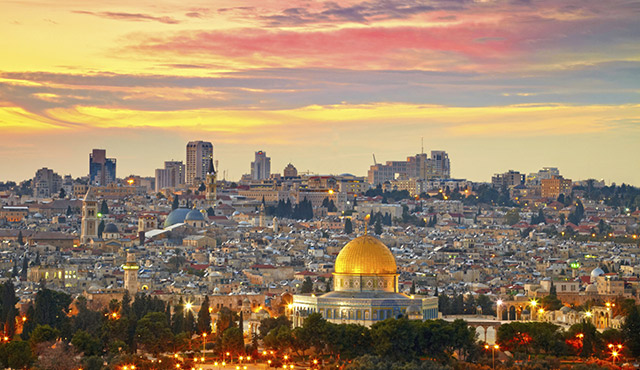Never having been to Jerusalem, I have, over the years, accumulated some fairly fanciful ideas about what certain places in the city—particularly the Old City—look like.
We all do this. If you’ve never traveled to, say, London, you know what the famous sights look like from pictures or films or television, but when you actually stand on the ground and walk around the city, the actual experience is nothing like the one that existed in the imagination. You just can’t get that genuine “feel” without being there.
But I now believe you can disabuse yourself of some of your long-held notions with a few good area maps paired with photos from lots of angles. This is what happened to me recently while I was doing research for a story about the Church of the Holy Sepulchre (the story is scheduled to appear in our March 29 issue).
The church contains the multiple sites of Jesus’ crucifixion, death, burial and resurrection. It’s very large indeed, and encompasses what was once the hill of Calvary.
So, naturally, I started looking around for a big hill. No big hill.
Jerusalem is hilly, yes, but it’s not San Francisco. And there’s definitely nothing poking up out of the center of town that looks like the Calvary portrayed in all those paintings and movies.
In fact, the Old City isn’t very sizable at all. Watch “Ben-Hur,” for example, and you’ll get the idea that the city of Jesus’ time was a real whopper of a metropolis and that a walk from the original Pretorium to Golgotha would take the better part of an afternoon and would require the agility of a mountain goat. But get yourself a decent map with a mile scale and pair it with a good, sharp photo from the Mount of Olives across the Kidron Valley and you’ll see that the topography is a lot flatter than you might expect, that it’s only a few blocks from the first Station of the Cross to the Church of the Holy Sepulchre (an estimated 2,000 feet or so), and that the Kidron Valley is about the size of a (very dry) par-5 golf hole.
This is to take away nothing from the wonder and the deep and immediate spirituality of the place. It’s just that when you have people like Jesus and the Blessed Mother and the apostles and Pilate and Herod and various other biblical heavyweights walking those streets, the town tends to take on larger-than-life properties.
Studying the Church of the Holy Sepulchre, and the Old City that contains it, has been an unexpected blessing. It has helped to iris Jerusalem and its holy sites down to human size, and to serve as a reminder that Jesus and the people of his time and place were real and human and lived their lives in very specific places that still exist—not in our imaginations, but in reality.

